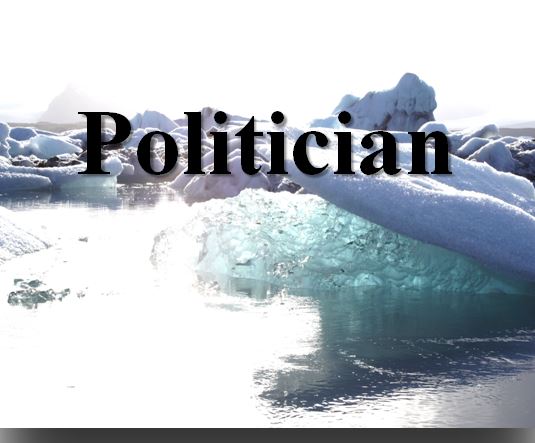First Role Play: Politician’s Stance “How certain are we that global average near-surface air temperature has increased since 1850?”
For the first role play the contributing roles were:
- Mainstream climate scientists
- Climate skeptics
- Journalists
- Politicians
In the whole discussion the mainstream climate scientists were certain that the global temperatures have increased and are still increasing. From their perspective the rising temperature trend is unequivocal. We as “Green politicians” were also on the same line with main stream climate scientists and we were willing to take action on climate change.
Skeptics claimed that using existing temperature data to study climate change is very uncertain. The skeptics argued that the allocation of stations that record the temperature is not appropriate. Furthermore, they argued that the stations were located near artificial or radiating heat source. Some stations were also located near waste water treatment plants. So, according to the skeptics the stations have exposure problem and this leads to an overestimate of temperature trends. Secondly, they argued that missing data also causes uncertainty.
Climate scientists accepted that there are uncertainties involved in scientific findings and results but in this particular case of temperature increase the uncertainties are less because there are multiple lines of evidence. They also agreed that the data was really bad in past and they cannot go back in time to improve the data. They have to work with the available data. Climate scientists said that it is evident that the uncertainties associated with the data are decreasing with the passage of time with advancement in measurement techniques.
Journalists argued that if the temperature increase is uncertain then it’s not true. Additionally, they argued that scientists depend on funding to conduct their research so their data can be biased in favor of the funding organization. We as politicians argued that it’s good that we know what is certain and what is uncertain so we should support scientists to improve their results in order to minimize the uncertainty. Moreover, we (politicians) argued that we are experiencing strong increase in regional temperatures than global temperatures.
Due to the lack of time we were unable to make our final point. From our (politician’s) perspective, a binding commitment is necessary in order to keep the global average temperature below a certain level. There should also be compensation for damages and losses associated with climate change, for example insurance of the property or areas that are at a risk of being damaged by extreme weather events.
Overall the discussion was very interesting!


I liked your performance as “green politicians” very much. Great idea to bring these photo pairs illustrating the status of the cryosphere “before and after climate change”! By this, you high-lighted very well that it appears easier to convince many people and likewise politicians by addressing their emotions rather than by strict scientific argumentation. As a nice coincidence, the German news website “Spiegel Online” reports today (07.05.2018) about newest data on the retreat of the (few) glaciers in the German Alps and the Green party calling for governmental action to mitigate climate change:
http://www.spiegel.de/wissenschaft/natur/neue-zahlen-deutschlands-alpen-gletscher-schwinden-a-1206487.html
From a scientific viewpoint, however, such a simplistic approach of “proving climate change” is of course questionable. It is well known that the natural climate system is a dynamically changing system. Thus, the pure existence of change of one component of the climate system at a specific place during a specific time period is nothing extraordinary, rather it has to be expected as the normal situation. For improving our certainty about anthropogenic global warming, it is necessary (1.) to look at the large-scale average behavior of the climate system component under study and (2.) to evaluate the magnitude of changes in comparison with natural fluctuations. Actually, in the case of retreating and advancing glaciers, there is compelling geological evidence that mountain glacier extent was lower than today during repeated periods in the Holocene (e.g., Humlum et al. 2005, Joerin et al. 2006, Solomina et al. 2015). However, the conclusion of the comprehensive review study by Solomina et al. (2015) was: “The rate and the global character of glacier retreat in the 20th through early 21st centuries appears unusual in the context of Holocene glaciation, though the retreating glaciers in most parts of the Northern Hemisphere are still larger today than they were in the early and/or mid-Holocene. The current retreat, however, is occurring during an interval of orbital forcing that is favorable for glacier growth and is therefore caused by a combination of factors other than orbital forcing, primarily strong anthropogenic effects.”
Joerin, U. E., Stocker, T. F., & Schlüchter, C. (2006). Multicentury glacier fluctuations in the Swiss Alps during the Holocene. The Holocene, 16(5), 697-704.
Humlum, O., Elberling, B., Hormes, A., Fjordheim, K., Hansen, O. H., & Heinemeier, J. (2005). Late-Holocene glacier growth in Svalbard, documented by subglacial relict vegetation and living soil microbes. The Holocene, 15(3), 396-407.
Solomina, O. N., Bradley, R. S., Hodgson, D. A., Ivy-Ochs, S., Jomelli, V., Mackintosh, A. N., … & Young, N. E. (2015). Holocene glacier fluctuations. Quaternary Science Reviews, 111, 9-34.